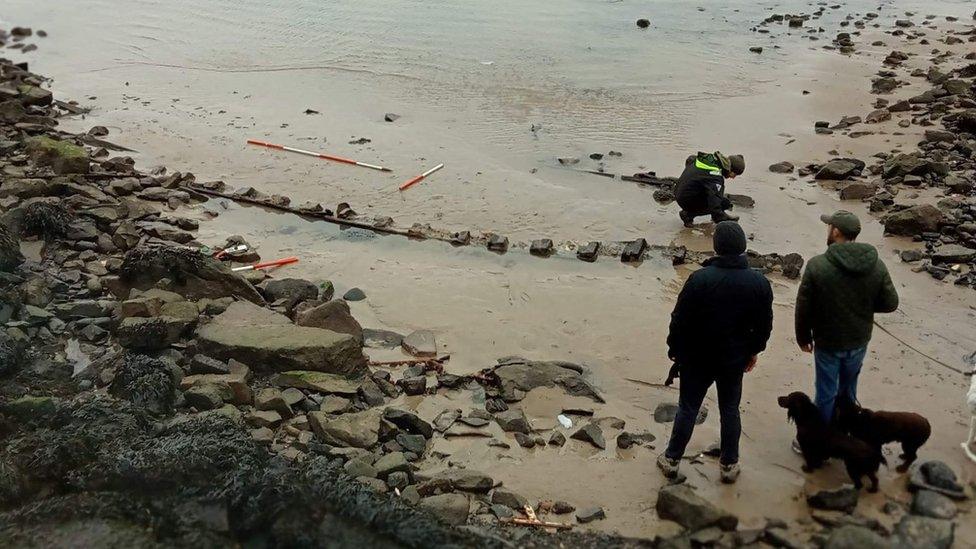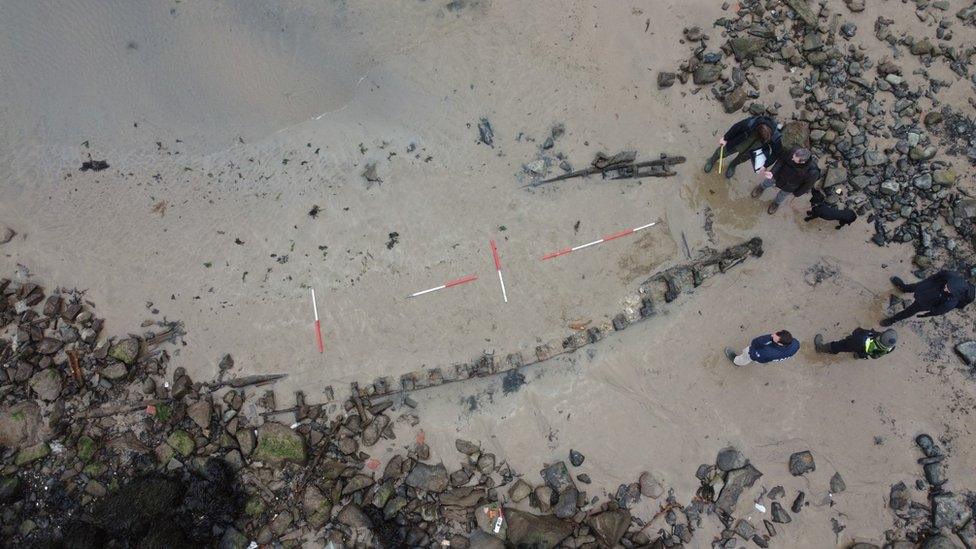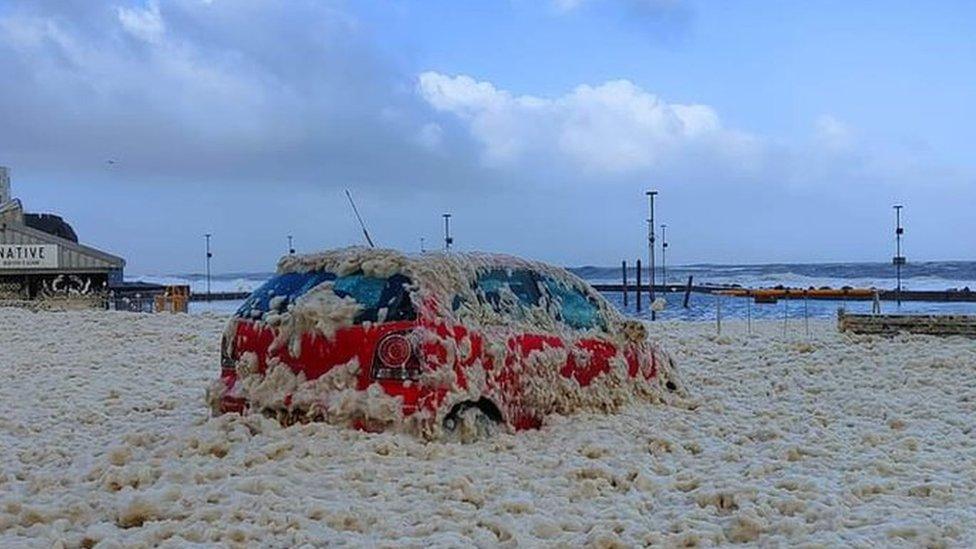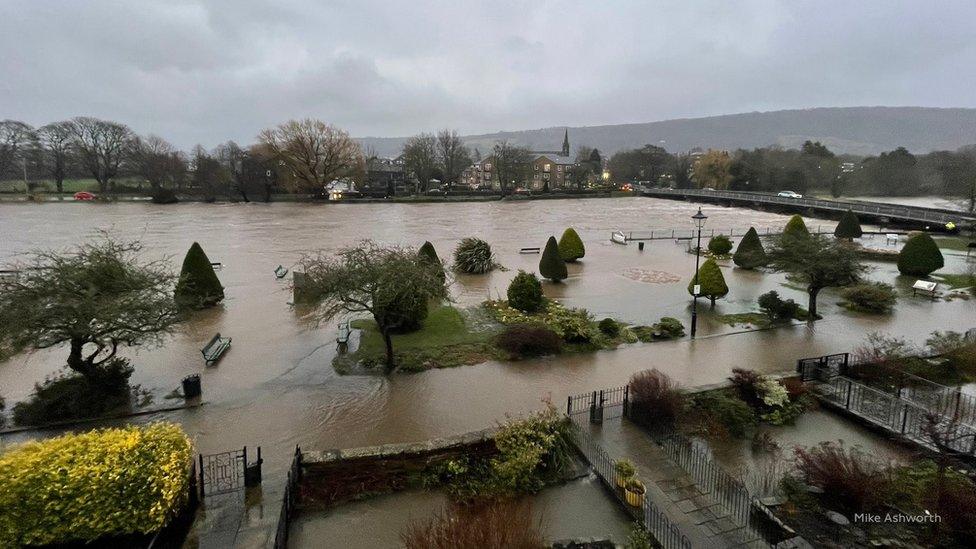Storms uncover 200-year-old boat on Portrush beach
- Published

It is understood recent stormy weather dislodged sand which had been covering the remains of a 200-year-old boat
If you're enjoying a walk on the beach it's more than likely you'll come across an interesting object or two which have been washed up or abandoned.
But a 200-year-old boat is not necessarily what you might have in mind.
That was what two dog walkers stumbled across in Portrush, County Antrim.
Cousins Gordy Wilton and Tommy Clyde were out with their dogs on Tuesday when they saw what appeared to be the outline of a boat embedded in the sand.
Mr Wilton, who walks the popular beach regularly, said he could not believe his eyes.
It is believed recent storms dislodged sand which had been covering the remains of the vessel.
The pair were walking their dogs Lady, JJ and Sasha, when they came across what they thought was some washed up debris on the beach.
However, on closer inspection they soon realised that they were actually looking at something of greater historical significance.
"I couldn't believe it when I realised it was a boat," Mr Wilton told BBC News NI.
"I have been on that beach thousands of times, I have built sandcastles with my kids on it and never would have known that was buried underneath," he said.

Mr Wilton was soon contacted by a team of experts
Upon making the discovery, Mr Wilton took to social media and was soon contacted by a team of archaeologists.
Colin Dunlop, who is part of the historic environment division with the Department for Communities (DfC) that helped survey the site, said the discovery "came as a surprise to us and the whole of Portrush".
Mr Dunlop said the boat was a Drontheim fishing vessel that was widely used by fishermen across Ireland in the 19th century.

The team looked at materials in and around the timbers of the vessel to help date it
He said it was very likely the boat would have been built in Portrush and would have sailed along the north coast.
"It would have been roughly about 11m (36 ft) in length and would have had sails and also oars for getting it back into the harbour," he told BBC News NI.
"We also believe a large section of the boat was completely ripped off it as it lay submerged in the sand, possibly from a boat hitting it as it entered the water from the slip-way."
Mr Dunlop said the team looked at materials in and around the timbers of the vessel to help date it.

The ship was estimated to be about 11m (36ft) in length
He explained that the vessel's location would likely still not have been known, had it not been for the recent high winds caused by Storm Eunice, Storm Dudley and Storm Franklin.
Mr Dunlop said increased storm surges caused by climate change meant even more vessels, like this one, were starting to appear.
He said any attempts to remove the boat would result in "immediate decay" of material.
Mr Dunlop said that it had been preserved very well because of the sea water and that any other attempt to preserve it would not work as well.
The team will now work to have the site listed as of "regional importance" to the area, and it will be protected from any future dredging work in the harbour.
It will also be added to the department's Historic Environment Map Viewer, external, which is a database used to record historical sites and material in Northern Ireland.
Related topics
- Published24 February 2022

- Published21 February 2022

- Published21 February 2022

- Published20 February 2022

- Published27 February 2022
